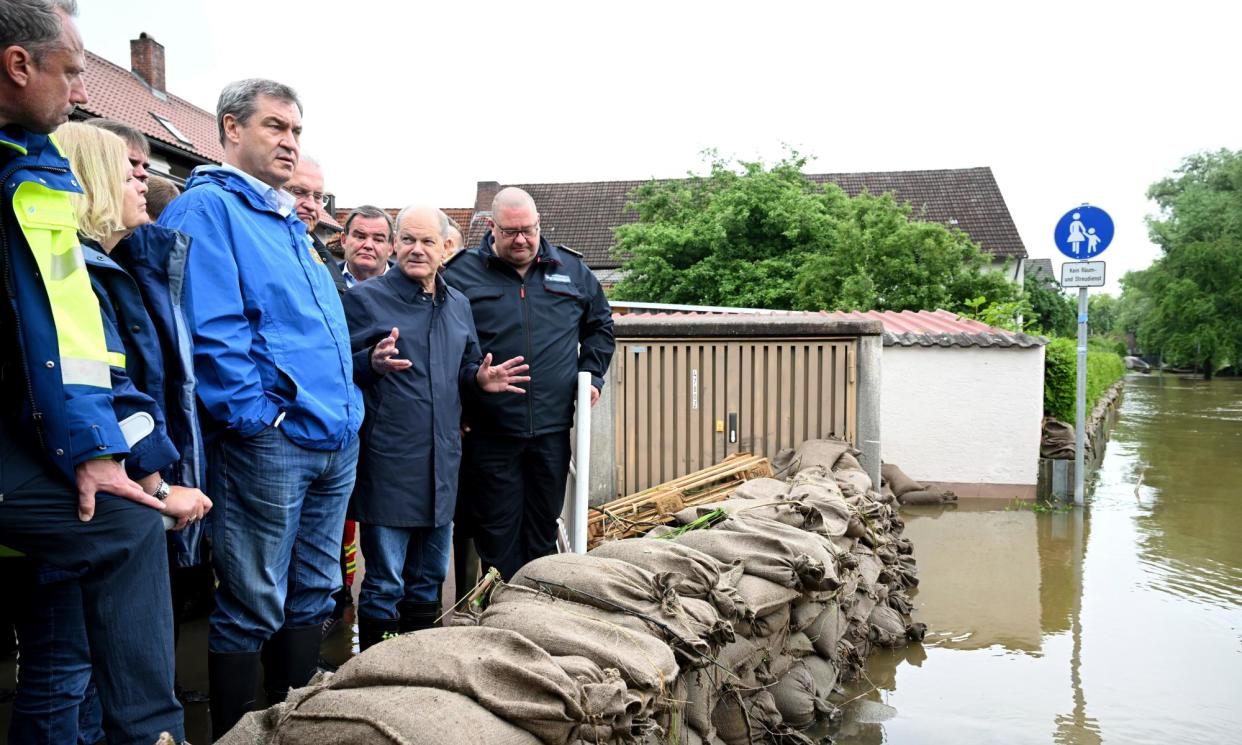Two killed and others missing in floods in southern Germany

Two people have died, others are missing and thousands have been forced to evacuate their homes in southern Germany after torrential rain caused widespread flooding.
A 22-year-old firefighter died when the inflatable boat his rescue crew was in capsized on the river near Pfaffenbach an der Ilm, 30 miles (50km) from Munich. The body of a woman who had gone missing on Saturday was found by rescue workers in the cellar of her house in Upper Bavaria.
The national rail network, Deutsche Bahn, has advised people to avoid travel for their own safety and to free up routes for rescue teams. There are also concerns that the Euro 2024 football championships, which Germany is due to start hosting in two weeks, may be affected by the flooding.
While no matches will be held in the flooded areas, the damaged roads and disruption to rail links around Munich, Nuremberg and Stuttgart, could affect transport for hundreds of thousands of football fans as they travel to venues across the country.
A dam on the river Paar, a tributary of the Danube, was breached in three places on Monday, prompting authorities to order people to move into the upper storeys of their homes to await rescue by boat and helicopter.
The historic city of Regensburg on the Danube, with a population of 150,000, announced a state of emergency as the water reached a critical point amid fears that record deluges of 2013 and 2002 could be repeated.
German military and the national relief organisation, THW, are in the area helping to rescue people and clearing dangerous obstacles.
Passengers stranded on Sunday night were given refuge in trains in Stuttgart, Nuremberg and Munich.
The chancellor, Olaf Scholz, travelled to Upper Bavaria on Monday with the interior minister, Nancy Faeser, and toured flood-hit areas alongside Bavaria’s leader, Markus Söder, stopping at Markt Reichertshofen where they were pictured inspecting walls of sandbags.
Scholz expressed his gratitude to the thousands of rescue workers, saying they had “tried to prevent the worst from happening and to save lives”. He promised central government support to help the flooded areas. He added that flooding was becoming more common in Germany, stressing that this was the fourth time he had visited a flood-stricken region this year. “This shows how the situation has changed due to climate change,” he said.
Farmers’ representatives warned that the flood waters could have a devastating impact on this year’s harvest.
Environmentalists called for a greater willingness among politicians and the population at large to recognise the link between the high rains and floods and climate change.
Related: Rescue worker dies amid flooding in southern Germany
Faeser, the interior minister, said her impression was that the mechanisms of the rescue effort had improved since the devastating flooding of the Ahrtal region in the Rhineland Palatinate three years ago, when 135 people lost their lives and about 17,000 people were left homeless.
“I think we’re functioning far better now in terms of coordination, and in our cooperation,” she said.
Some political leaders are calling for the introduction of a solidarity-based flood insurance premium for all households in Germany, regardless of whether they are in areas at high risk of flooding or not.


